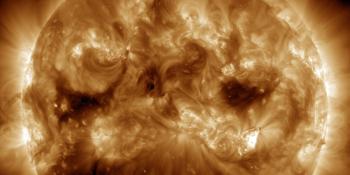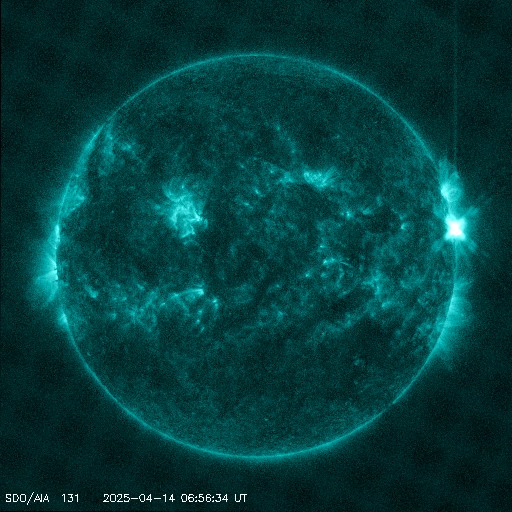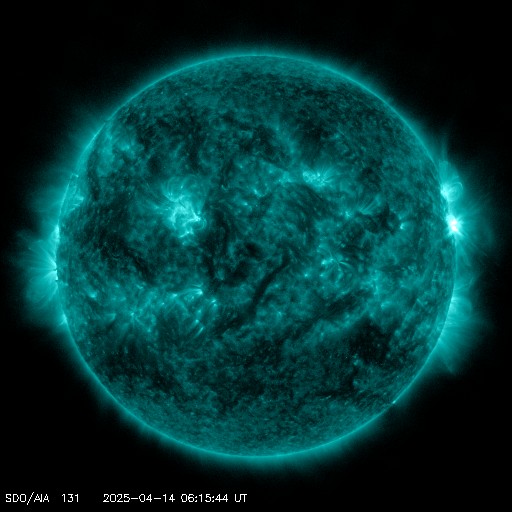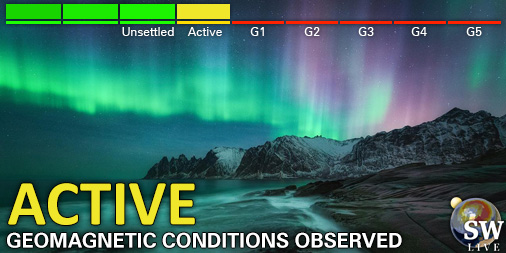Viewing archive of Friday, 16 November 2012
Solar activity report
Any mentioned solar flare in this report has a scaling factor applied by the Space Weather Prediction Center (SWPC). Because of the SWPC scaling factor, solar flares are reported as 42% smaller than for the science quality data. The scaling factor has been removed from our archived solar flare data to reflect the true physical units.
Report of Solar-Geophysical Activity 2012 Nov 16 2200 UTCPrepared by the NOAA © SWPC and processed by SpaceWeatherLive.com
Joint USAF/NOAA Report of Solar and Geophysical Activity
SDF Number 321 Issued at 2200Z on 16 Nov 2012IA. Analysis of Solar Active Regions and Activity from 15-2100Z to 16-2100Z
Solar activity has been at low levels for the past 24 hours.
The largest solar event of the period was a C8 flare observed at
16/1539Z from the northeast limb. This event was accompanied by a Type
II radio sweep (511 km/s). A long duration C1 flare from Region 1613
(S23W05) occurred at 16/0751Z with an associated 24 degree filament
eruption centered near S39E22 at 16/0720Z. Another filament eruption
was observed from the East limb seen in SDO/AIA 304 imagery beginning at
16/0648 UTC. Analysis of SOHO/LASCO C2 suggested these eruptions would
not be geoeffective.
Yesterdays general trend of decreasing size and complexity continued
among all active regions, leaving Region 1610 (S22W63) as the only
beta-gamma type group on the visible disk. However, flux emergence was
observed in other portions of the disk. New Region 1617 (S18W18) was
numbered today, and emerging flux was noted near N12E35 on SDO/HMI
magnetogram loops and later reported by Holloman Solar Observatory
There are currently 8 numbered sunspot regions on the disk.
IB. Solar Activity Forecast
Solar activity is expected to be at low
levels with a chance for an isolated moderate event on days one, two,
and three (17 Nov, 18 Nov, 19 Nov).
IIA. Geophysical Activity Summary 15-2100Z to 16-2100Z
The geomagnetic
field has been at quiet levels for the past 24 hours. Solar wind speed
at the ACE spacecraft reached a peak speed of 453 km/s at 16/1112Z, but
generally remained in the low to mid 400 km/s range under the waning
influence of a weak negative coronal hole high speed stream. Bz was
generally -4nT or greater through the period. No significant
discontinuities were observed in the measured variables.
IIB. Geophysical Activity Forecast
The geomagnetic field is expected
to be at quiet to unsettled levels for the next three days (17 Nov, 18
Nov, 19 Nov). The field is expected to be occasionally unsettled over
the next three days as another coronal hole high speed stream becomes
geoeffective.
III. Event Probabilities 17 Nov to 19 Nov
| Class M | 25% | 25% | 25% |
| Class X | 05% | 05% | 05% |
| Proton | 05% | 05% | 05% |
| PCAF | green | ||
IV. Penticton 10.7 cm Flux
Observed 16 Nov 138 Predicted 17 Nov-19 Nov 141/145/145 90 Day Mean 16 Nov 120
V. Geomagnetic A Indices
Observed Afr/Ap 15 Nov 003/003 Estimated Afr/Ap 16 Nov 005/005 Predicted Afr/Ap 17 Nov-19 Nov 008/008-007/008-006/005
VI. Geomagnetic Activity Probabilities 17 Nov to 19 Nov
| A. Middle Latitudes | |||
|---|---|---|---|
| Active | 20% | 10% | 05% |
| Minor storm | 10% | 05% | 01% |
| Major-severe storm | 01% | 01% | 01% |
| B. High Latitudes | |||
|---|---|---|---|
| Active | 15% | 15% | 15% |
| Minor storm | 30% | 20% | 10% |
| Major-severe storm | 35% | 20% | 05% |
All times in UTC
Current data suggests there is a slight possibility for aurora to appear at the following high latitude regions in the near future
OuluArkhangelsk, Vorkuta
Umeå
Latest news
Latest forum messages
Potential AR4062 7AR 4055 97Unspecified geomagnetic activity 2254Incoming & Unnumbered Active Regions 1698AR 4060 23
More topicsSupport SpaceWeatherLive.com!
A lot of people come to SpaceWeatherLive to follow the Sun's activity or if there is aurora to be seen, but with more traffic comes higher server costs. Consider a donation if you enjoy SpaceWeatherLive so we can keep the website online!

Latest alerts
07:09 UTC - Solar flare
Moderate M4.28 flare from sunspot region 4055
06:48 UTC - Radio Blackout
Minor R1 radio blackout in progress (≥M1 - current: M1.53)
06:24 UTC - Solar flare
Moderate M1.49 flare from sunspot region 4055
06:06 UTC - Radio Blackout
Minor R1 radio blackout in progress (≥M1 - current: M1.16)
04:45 UTC - Geomagnetic activity
Active geomagnetic conditions (Kp4) Threshold Reached: 04:29 UTC
Space weather facts
| Last X-flare | 2025/03/28 | X1.1 |
| Last M-flare | 2025/04/14 | M4.2 |
| Last geomagnetic storm | 2025/04/06 | Kp5 (G1) |
| Spotless days | |
|---|---|
| Last spotless day | 2022/06/08 |
| Monthly mean Sunspot Number | |
|---|---|
| March 2025 | 134.2 -20.4 |
| April 2025 | 132.1 -2.1 |
| Last 30 days | 132.4 -10.7 |





